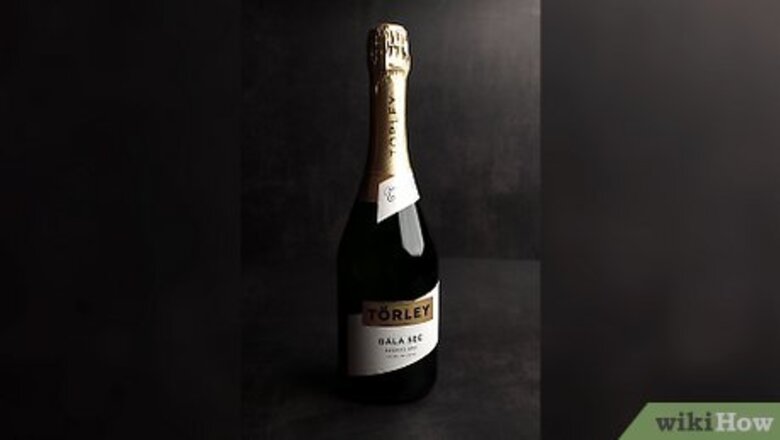
views
Place your champagne upright for short-term storage.
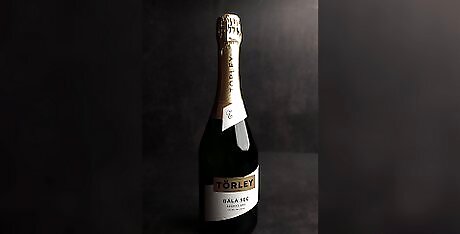
Champagne can be stored upright for 1 month or less. Most wines need to be stored on their sides because the angle of the liquid keeps the cork from drying. Champagne, on the other hand, has bubbles that keep the inside of the bottle humid. While you can still store the bottle on its side, the cork also won’t dry out in the month that you store the bottle upright.
Store champagne bottles horizontally for the long-term.

Storing champagne horizontally keeps the cork moist longer. As with most other wines, champagne corks can dry out if the bottle is kept upright for long periods, and when the cork dries out, it can’t seal the bottle effectively anymore. While you may save space by storing bottles upright for a little while, store your champagne sideways on a rack or shelf if you know you’ll be keeping it long-term.
Stash champagne away from sunlight.
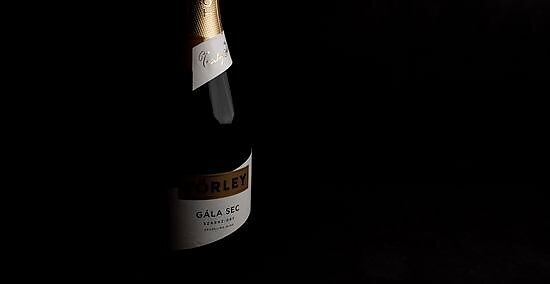
Champagnes and other sparkling wines are sensitive to light. That’s why their bottles are often so darkly tinted, and why your champagne needs a storage spot with no sunlight. Choose somewhere in your home without windows, like a basement or a cupboard, or use thick curtains over windows to block the sun wherever you store your champagne. Artificial light can prematurely age the champagne too, so make sure any artificial lights in the storage space aren’t on for the majority of the time. If you don’t have a windowless room, thick curtains, or cupboard space, you can always cover up the champagne bottles with a thin dark cloth.
Keep the temperature cool when storing champagne.
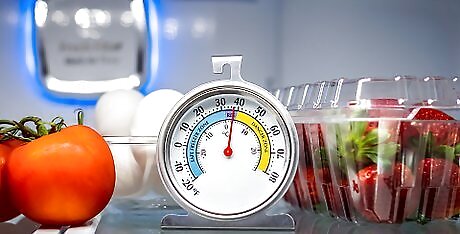
Champagne ages best when the storage area is chilly but not freezing. Your refrigerator can serve as a good storage spot for at least a week but no more than a month. The ideal temperature for long-term champagne storage is 52 °F (11 °C), but any temperature between 48 °F (9 °C) and 53 °F (12 °C) will work just as well. Basements are ideal for long-term storage, as they're naturally dark and cool. The freezer is not a good storage place! Leaving it there will quickly flatten the champagne and make it undrinkable. If there is no basement in your home, invest in a wine rack and place it in a dark area that you can easily keep cool, such as a pantry or a small room with few windows. A cooling unit or thermostat could regulate the temperature of your storage room. A refrigerator isn’t the best solution for long-term storage, as food needs to be kept at colder temperatures than champagne to stay fresh. Under a month is fine, but champagne shouldn’t be in the fridge for months or years.
Maintain consistent storage temperatures.
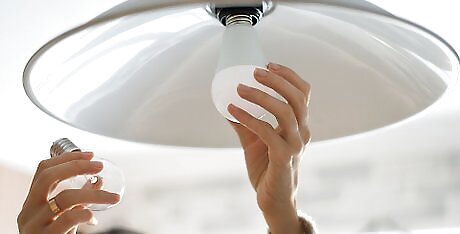
Fluctuating temperatures can damage champagne. Consistency is more important than the exact temperature, so make sure that your champagne stays within the same temperature range for the duration of its storage. When temperature shifts in an extreme way, the champagne expands and contracts, which may cause seepage. Using a portable air conditioner and adjusting it according to the season could help to keep the temperature of the storage area consistent. Generally, you can keep a house on the cooler side by using insulated curtains and LED light bulbs, and by using fans to encourage airflow. You can also warm up an area during colder seasons by keeping radiators clear and sealing drafty windows, in addition to the simpler solution of adjusting any home heating systems accordingly. This is why sheds and garages are not ideal for storing champagne. If the temperature fluctuates too much, the champagne won’t last. An area inside your home is much better.
Choose a storage area with 50-75% humidity.
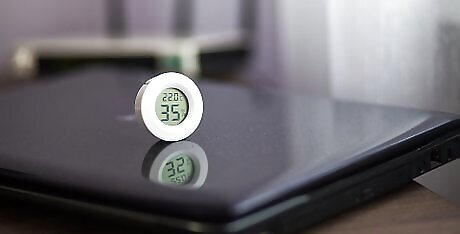
Humidity is important for keeping the champagne properly sealed. A humid environment keeps the cork from drying out, but too much humidity can cause peeling and moldiness. As such, keep your champagne somewhere with steady humidity levels at all times. The minimum humidity level for storing champagne is 50%, and the ideal level is 75%. Allow humidity levels to get no higher than 85% for best preservation. A temperature sensor installed in your storage area can monitor both temperature and humidity. This will alert you to any changes that happen while you’re storing champagne.
Pick a storage area without any vibrations or smells.
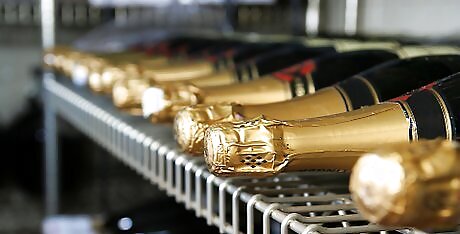
Vibrations in the storage area can shake up a bottle of champagne. Store your champagne on a flat, even surface away from dishwashers, dryer machines, and other common household items that cause vibrations. Store champagne away from strong scents as well because they will be absorbed over time and interfere with the flavors in the wine. This is why storing champagne in the refrigerator is purely a short-term solution, as too much time in the fridge will alter the wine's flavor.
Buy champagne in magnums to store long-term.

Magnum bottles of champagne will age better than a normal bottle. A magnum is simply a larger bottle, equalling one and a half liters of champagne (rather than the standard 750-milliliter bottle). Because there’s more wine and less oxygen in the bottle, the champagne will mature slowly and evenly and keep more flavor.
Plan to drink your champagne within 4 years.

Champagne has a shorter shelf life than most wines. Producers age champagne in their cellars, so the bottles are ready to drink from the moment you buy them. Because champagne is designed to be drunk immediately, it will only last for about 3 to 4 years after you get it. Storing your champagne for 2 or 3 weeks after buying it will help the wine settle, but extended storage is entirely optional. Extra aging for months or years after you buy champagne can bring out the wine’s more complex flavors. Make a note when you store each bottle so that you’ll know how long you have to drink them. A vintage bottle of champagne has a longer shelf life. It can be stored for another 5 to 10 years after you get it.
Keep open champagne cold for up to 5 days.
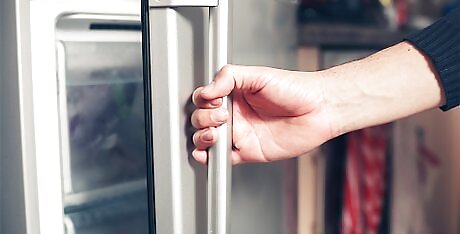
Open bottles of champagne need cold temperatures to remain bubbly. If you plan to leave the champagne out to be finished over the day, store the open bottle in a bucket of ice. If you need to store an open bottle overnight and possibly longer, move it into one of the cooler spots in your refrigerator. A chilled open bottle of champagne can keep its bubbles for about 3 to 5 days before flattening.
Use an airtight cork to preserve open champagne.
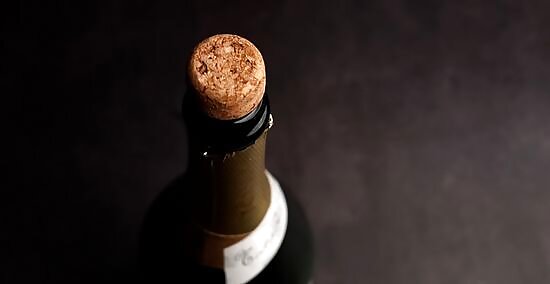
A hermetic cork will keep the champagne fresh and bubbly for longer. While keeping the champagne cold is your best bet for storing an open bottle, you can supplement that by re-corking it with a hermetic cork. They’re hinged and designed to stop any oxygen from flattening the bubbles, sealing the bottle better than the original cork would if you tried reusing it. Another option would be to stick a metal spoon into the neck of your open champagne bottle. The metal acts as a conductor to keep the bottle (and the champagne) cold, which again helps maintain bubbles.










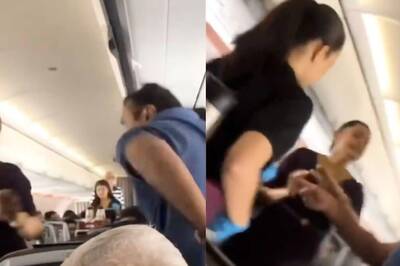




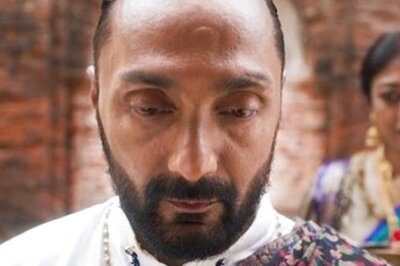

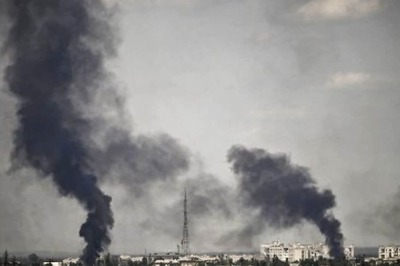


Comments
0 comment